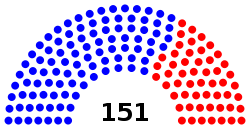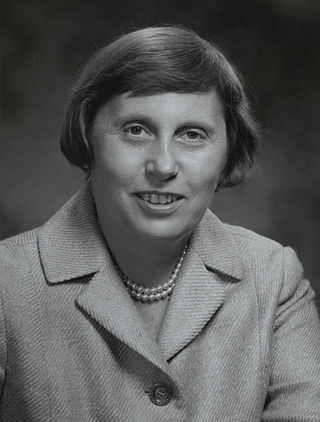
Ella Rosa Giovianna Oliva Grasso was an American politician and member of the Democratic Party who served as the 83rd Governor of Connecticut from January 8, 1975, to December 31, 1980, after rejecting past offers of candidacies for Senate and Governor. She was the first woman elected Governor in Connecticut and the fourth woman to be elected governor of a U.S. state. She is also the first female governor to not be the spouse or widow of a former governor. She resigned as governor due to her battle with ovarian cancer.

The 2000 Democratic National Convention was a quadrennial presidential nominating convention for the Democratic Party. The convention nominated Vice President Al Gore for president and Senator Joe Lieberman from Connecticut for vice president. The convention was held at the Staples Center in Los Angeles, California from August 14 to August 17, 2000. Gore accepted the presidential nomination on August 17, the final night of the convention.

The Ohio Republican Party is the Ohio affiliate of the Republican Party. It was founded in Columbus, Ohio, in 1854.

The Connecticut State Senate is the upper house of the Connecticut General Assembly, the state legislature of the U.S. state of Connecticut. The state senate comprises 36 members, each representing a district with around 99,280 inhabitants. Senators are elected to two-year terms without term limits. The Connecticut State Senate is one of 14 state legislative upper houses whose members serve two-year terms; four-year terms are more common.
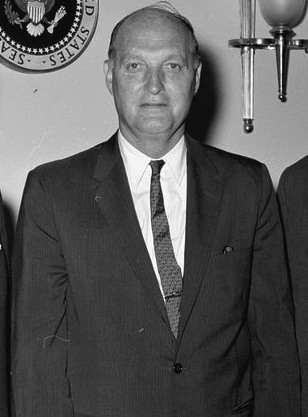
John Moran Bailey was an American politician who played a major role in promoting the New Deal coalition of the Democratic Party and its liberal policy positions.

The 2006 Connecticut gubernatorial election occurred on November 7, 2006. Incumbent Republican Jodi Rell became governor when John G. Rowland resigned on corruption charges in 2004. Rell had an approval rating of 70% as of October 19, 2006, and polls showed her leading the Democratic nominee, New Haven mayor John DeStefano by a near 30-point margin. As expected, she won the election to a full term in a landslide. DeStefano defeated Stamford Mayor Dannel Malloy in the Connecticut Democratic gubernatorial primary on August 8. As of 2024, this is the last time a Republican and woman was elected Governor of Connecticut, and the last time any gubernatorial candidate won every county in the state to date.

Susan Bysiewicz is an American politician and attorney who has served as the 109th lieutenant governor of Connecticut since 2019. She previously served as the 72nd secretary of the state of Connecticut from 1999 to 2011 and a member of the Connecticut House of Representatives from 1993 to 1999.

Connecticut is divided among five congressional districts from which citizens elect the state's representatives to the United States House of Representatives. After the re-apportionment following the 2000 census, Connecticut lost one representative, reducing the state's delegation from six to five. The redistricting process was shared between the Republican governor at the time, John G. Rowland, and the Democratic-controlled General Assembly. Before the census, the state's House delegation was split evenly between Republicans and Democrats, and the solution finally agreed upon by the redistricting committee would ensure an even match-up between incumbents, the 6th district's Nancy L. Johnson, a Republican, and the 5th district's James H. Maloney, a Democrat. In the 2002 elections, Johnson defeated Maloney by a surprisingly large margin in the new 5th district.
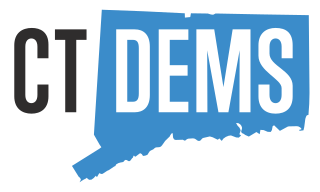
The Connecticut Democratic State Central Committee is the affiliate of the Democratic Party in the state of Connecticut. Its chair is Nancy DiNardo.
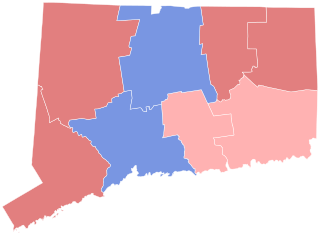
The 2010 Connecticut gubernatorial election took place on November 2, 2010, to elect the 88th Governor of Connecticut. Incumbent Republican Governor Jodi Rell had announced in a press conference in Hartford on November 9, 2009, that she would not seek re-election in 2010. The sites Cook Political Report and CQ Politics both rated the election as a toss-up. This was the first open seat gubernatorial election in the state since 1994. As of 2024, this is the last time the Governor’s office in Connecticut changed partisan control.

The 2012 United States Senate election in Connecticut was held on November 6, 2012, in conjunction with the 2012 U.S. presidential election, other elections to the United States Senate in other states, as well as elections to the United States House of Representatives, and various state and local elections. Primaries to elect Senate candidates from the Republican and Democratic parties were held on Tuesday, August 14, 2012.

Various kinds of elections in Connecticut occurs annually in each of the state's cities and towns, the exact type of which is dependent on the year. Elections for federal and statewide offices occur in even-numbered years, while municipal elections occur in odd-numbered ones. The office of the Connecticut Secretary of State oversees the election process, including voting and vote counting. In a 2020 study, Connecticut was ranked as the 20th easiest state for citizens to vote in.
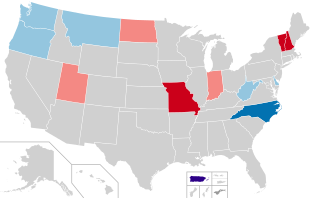
United States gubernatorial elections were held on November 8, 2016, in 12 states and two territories. The last regular gubernatorial elections for nine of the 12 states took place in 2012. The last gubernatorial elections for New Hampshire, Oregon, and Vermont took place in 2014, as Oregon held a special election due to the resignation of Governor John Kitzhaber, while the governors of New Hampshire and Vermont both serve two-year terms. The 2016 gubernatorial elections took place concurrently with several other federal, state, and local elections, including the presidential election, Senate, and House elections.

The 2016 Indiana gubernatorial election was held on November 8, 2016, to elect the governor and lieutenant governor of Indiana, concurrently with the 2016 U.S. presidential election as well as elections to the United States Senate and elections to the United States House of Representatives and various state and local elections. The primaries were held on May 3, 2016. Republican lieutenant governor Eric Holcomb won the race with 51.4% of the vote.
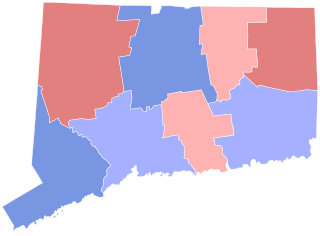
The 2018 Connecticut gubernatorial election took place on November 6, 2018, to elect the next governor and lieutenant governor of Connecticut, concurrently with the election of Connecticut's Class I U.S. Senate seat, as well as other elections to the United States Senate in other states, elections to the United States House of Representatives, and various state and local elections. This race's Democratic margin of victory was the closest to the national average of 3.1 points.

The 2020 Indiana gubernatorial election was won by incumbent Republican Eric Holcomb on November 3, 2020. The election was held concurrently with the 2020 U.S. presidential election, as well as elections to the United States House of Representatives and various state and local elections.

The 2018 California Attorney General election was held on November 6, 2018, to elect the Attorney General of California. The 2014 election winner Kamala Harris was elected to the United States Senate during the 2016 Senate election; incumbent Democratic Attorney General, Xavier Becerra won election to a full term.

